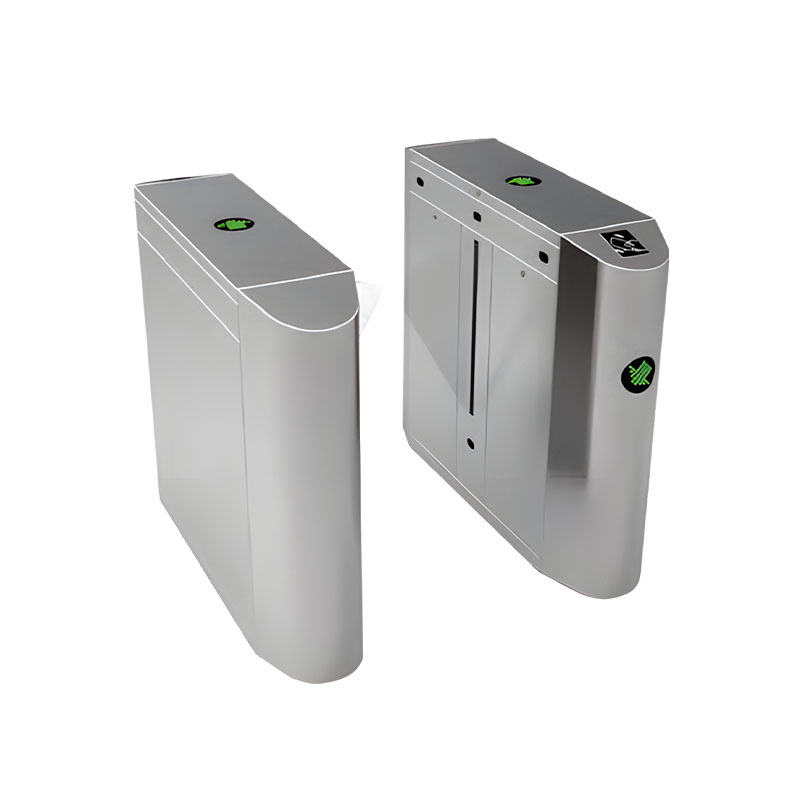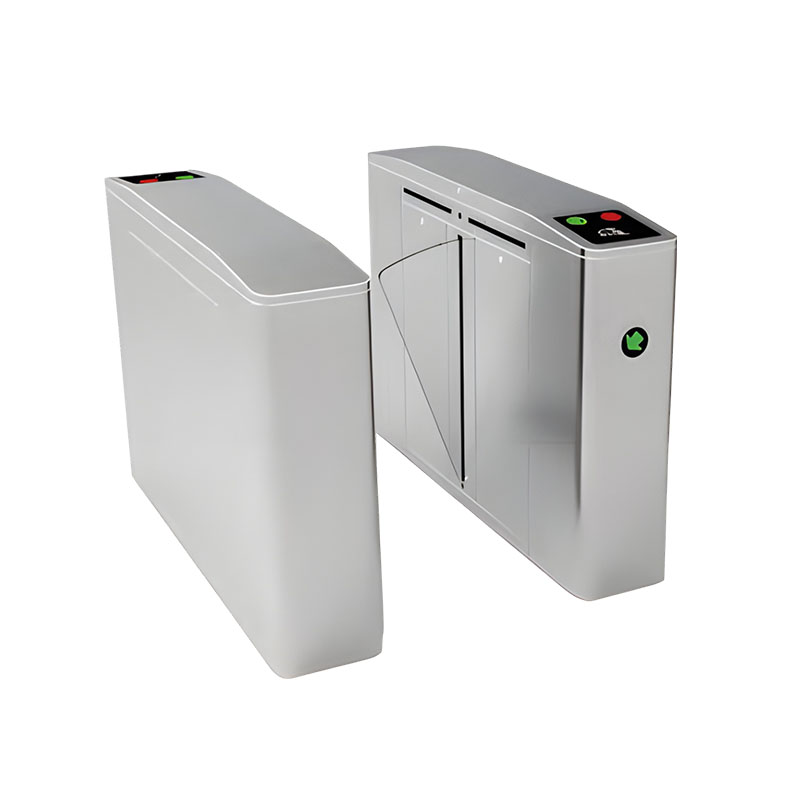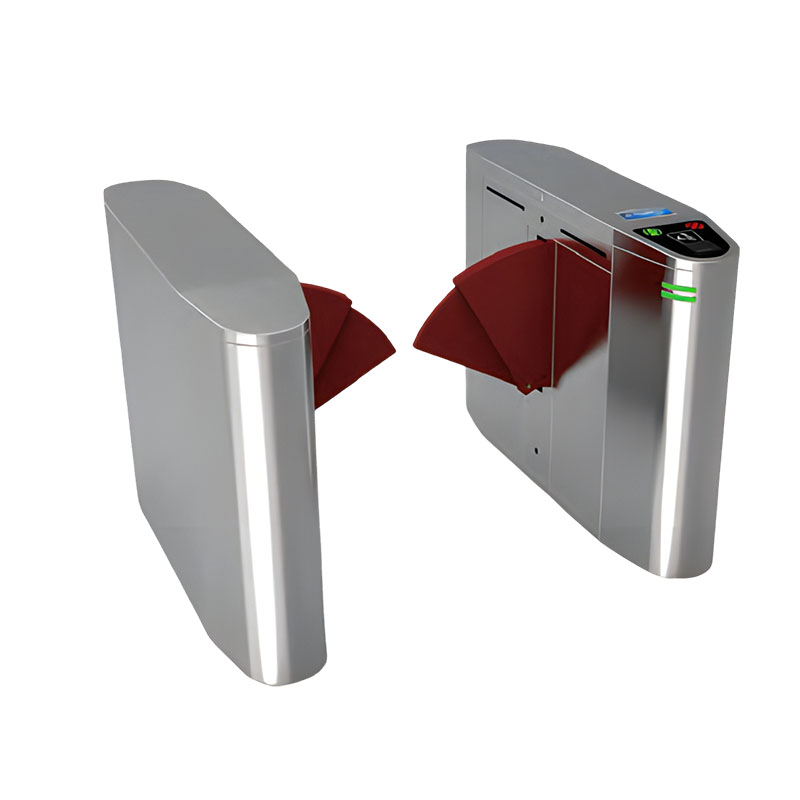How can we optimize the opening and closing response speed of pedestrian access gates during peak traffic conditions?
Release Time : 2025-08-28
To optimize the opening and closing response speed of pedestrian access gates during peak traffic flow, the first step is to improve the detection process, enhancing the immediacy of person identification and triggering. During peak hours, when traffic is dense and the pace of movement is high, traditional single-point infrared sensors are prone to delayed door opening due to limited detection range or response delays. Therefore, multiple sets of high-precision sensors are deployed in a coordinated manner. For example, infrared array sensors or millimeter-wave radars are deployed at the front, center, and inner wings of the gate entrance to form a three-dimensional detection area. These sensors not only have faster response times (typically reaching milliseconds), but can also accurately distinguish between people and belongings, avoiding false positives (such as fluttering clothing or obstructions) that could cause invalid door openings. This ensures that the door opening command is triggered instantly upon approaching a person, reducing the waiting time for the gate to open.
Optimizing the mechanical transmission system is key to reducing the time required for physical door opening and closing. During peak hours, gates must frequently complete opening and closing cycles. Traditional stepper motors are prone to stalling or slowing down due to insufficient starting torque and high friction in transmission components. Therefore, they must be replaced with high-response servo motors, which can instantly reach rated speed upon receiving the door opening command. Precision gear sets and ball screws replace conventional transmission components to reduce mechanical friction losses. Furthermore, the design of the door wings or gate levers must accommodate high-speed movement. For example, lightweight materials (such as carbon fiber composites or high-strength engineering plastics) can be used to construct the door wings, reducing motor load and significantly shortening the time it takes for the door wings to fully close and open. Furthermore, the door wing motion trajectory can be optimized, with curved opening and closing paths instead of linear ones. This avoids speed losses caused by sudden changes in movement direction and ensures smooth and efficient door opening and closing.
Dynamic adjustment of the control algorithm is key to adapting to the continuous flow of people during peak hours. During peak hours, people often pass through continuously. If the gate machine continues to operate according to the conventional logic of "immediately closing after a single person passes," conflicts between the closing action and the next person triggering the door to open can easily occur, resulting in traffic interruptions. Therefore, a "continuous passage prediction algorithm" needs to be developed. This algorithm analyzes real-time sensor data (such as occupant speed and distance between preceding and succeeding occupants). If it detects that the preceding person has not yet fully passed but the following person has entered the detection area, the algorithm will delay the door closing command while keeping the door wings half-open. Upon triggering the next person, the door will open immediately, eliminating the "closing-reopening" time delay. Furthermore, the thresholds for anti-pinch logic need to be optimized. Traditional anti-pinch systems, driven by excessive focus on safety, set relatively sensitive trigger thresholds. Even the slightest obstruction (such as the corner of clothing) can cause the door wings to slow down or stop. During peak hours, the anti-pinch thresholds can be dynamically adjusted to loosen in non-critical areas, maintaining high sensitivity only in core areas where people could be trapped (such as the closing of the door wings). This avoids safety hazards and reduces the impact of ineffective deceleration on traffic speed.
Improving the efficiency of the access verification process also directly impacts overall response speed. If the verification process takes too long during peak hours (e.g., slow card swipe recognition or delayed biometrics), congestion can still occur even if the gate opens and closes quickly. Therefore, the hardware and software of the verification module need to be optimized. High-speed recognition components, such as ultra-high-frequency RFID readers (with recognition speeds of less than 100 milliseconds) and high-definition, high-speed facial recognition cameras (supporting dynamic capture and real-time comparison), are used in hardware. A "pre-verification mechanism" is implemented in software, with a pre-sensing zone set up 1-2 meters in front of the gate entrance. When a person enters this zone, the verification device initiates recognition (e.g., pre-reading card information and pre-processing facial images). By the time the person arrives at the gate, the verification result has been synchronized with the gate control system, enabling a seamless "verification-to-door opening" transition and eliminating the need for people to wait for verification at the gate.
Multi-gate linkage and load balancing can further improve overall traffic efficiency. During peak hours, if multiple gates operate independently, some gates can easily become congested, leaving some pedestrian access gates idle, indirectly reducing the response efficiency of individual gates. Therefore, a gate linkage control system is needed. This system collects real-time traffic data from each gate (such as the number of people waiting and the frequency of gate opening and closing) through a central management platform. It then uses screens or voice prompts to redirect traffic to available gates, preventing overheating and mechanical fatigue caused by high-frequency operation of individual gates and maintaining stable opening and closing speeds. Furthermore, the linkage system can uniformly adjust the response parameters of each gate. For example, during peak hours, the opening speed of all gates can be adjusted to the maximum and the closing interval can be shortened to the minimum safe value, creating a "high-speed traffic mode." Once the flow of people subsides, the system automatically restores normal parameters, balancing speed and equipment wear.
Emergency redundancy is crucial for ensuring stable response during peak hours. If a key component (such as a sensor or motor) of a pedestrian access gate suddenly fails during peak hours, relying solely on repairs can disrupt traffic and exacerbate congestion. Therefore, redundant backups of core components are essential. For example, dual sensors can operate in parallel. If the primary sensor fails, the backup sensor immediately switches to the backup, eliminating the need for interrupted detection. The motor drive module can also be equipped with a backup circuit. If an abnormality occurs in the primary circuit, it can switch to the backup circuit within milliseconds, ensuring uninterrupted gate operation. Furthermore, the system must have rapid fault diagnosis capabilities. By monitoring current, voltage, and component operating status in real time, it can predict potential faults (such as motor overheating and decreased sensor sensitivity) in advance. It can then automatically adjust parameters (such as reducing load and enhancing sensor signals) or issue maintenance alerts before peak traffic arrives, preventing faults from affecting response speed during peak hours.
Daily maintenance and dynamic parameter calibration are essential for maintaining long-term peak response efficiency. After long-term, high-frequency operation of gates, problems such as wear on mechanical components and dust accumulation on sensors can gradually reduce response speed. Therefore, a regular maintenance mechanism is necessary—for example, weekly cleaning of sensor surfaces, monthly application of specialized lubricants to transmission components, and quarterly inspections of motor operating status—to ensure components are always in optimal working condition. Furthermore, the system must possess AI-powered adaptive learning capabilities. By analyzing historical peak traffic data (such as crowd density and speed at different times of day), it can automatically calibrate gate opening and closing parameters (for example, increasing door opening speed by 20% and shortening door closing intervals by 15% during the morning rush hour between 7 and 9 p.m.). Sensor detection range and sensitivity can also be adjusted based on traffic patterns, ensuring that gate responses consistently meet the needs of actual peak traffic conditions and avoiding efficiency losses caused by fixed parameters.







